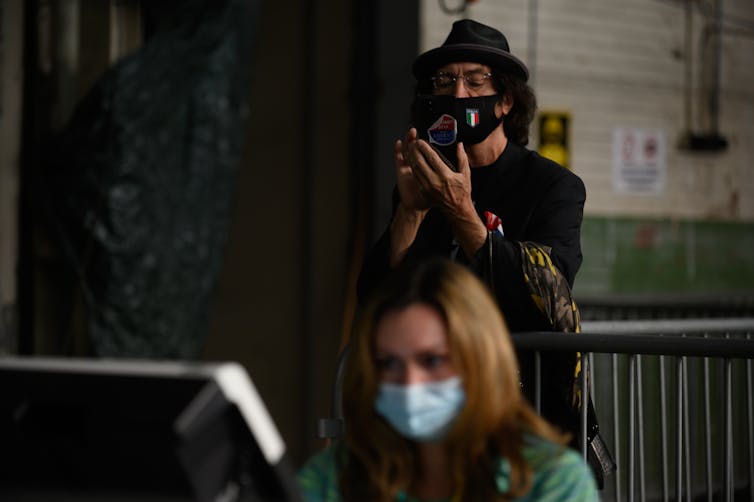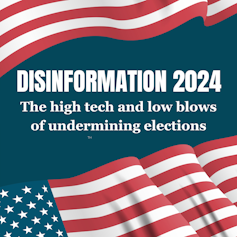In certain circles, the 2020 presidential election isn’t over – and that seems to be at least a little bit true. In recent weeks, official reviews of election records and processes from the 2020 presidential election have reported findings that might be used to spread rumors about voting integrity.
For instance, election officials in Virginia’s Prince William County announced on Jan. 11, 2024, that 4,000 votes from the 2020 presidential election had been miscounted. None of them changed the results. Those miscounts gave Donald Trump 2,327 more votes than he actually got, and Joe Biden 1,648 votes fewer. Errors in counting turned up in other races, too, with both parties’ candidates for U.S. Senate being given fewer votes than they actually received, and a Republican who won a seat in the U.S. House of Representatives actually won by a slightly larger margin than previously reported.
An audit of South Carolina’s 2020 voting records released in mid-January found no fraud and no indication any election results could have been different with the errors that were identified. But the report did recommend election officials cross-check lists of registered voters with other state lists more frequently than they have done in the past. Death reports and prison inmate rolls can help them determine who should remain eligible to voter and who should be removed from voting lists, the report said.
The Conversation U.S. has published several articles about the systems protecting election integrity. Here are four examples from our archives.

1. Changing numbers are evidence of transparency, not fraud
The news reports of election audits came, originally, from election officials themselves, who specified they were below the small margins that would have triggered recounts. The reports also offered explanations for what had happened and how to fix it in the future – and included statements that at least some of the problems had already been fixed for upcoming elections.
That’s an example of what Kristin Kanthak, a political scientist at the University of Pittsburgh, was talking about when she explained that election results that change over time aren’t inherently a problem:
“(T)his doesn’t mean the system is ‘rigged.’ Actually, it means the system is transparent to a fault,” she wrote.
2. Easier voting is not a threat to election integrity
Erecting obstacles to voting will not prevent the problems that do exist in the election system, for the simple reason that the flaws are not a result of easier voting methods, such as early voting and voting by mail.
Grinnell College political scientist Douglas R. Hess observed that the COVID-19 pandemic was a massive test of whether a secure election could be held with a lot of accommodations that made voting easier, and safer from the spread of disease.
As he wrote,
“(E)arly voting and voting by mail are targeted for restrictions in many states, even though both reforms are popular with the public, worked securely in 2020 and have been expanded in many states for years without increases in fraud. Likewise, the collection of absentee ballots – a necessity for some voters – can be implemented securely.”
Read more: Making it easier to vote does not threaten election integrity
3. It’s possible for election workers to be both partisan and fair-minded
For many years, elections have been run by people who were members of one political party or the other but behaved in good faith to run fair elections, wrote Thom Reilly, a scholar at Arizona State University’s School of Public Affairs.
But both the facts and the rhetoric have changed, he explained, noting that a significant share of the electorate is not a member of either party – so the people who supervise elections, who are typically party members, are “an increasingly partisan set of officials.”
Even so, many of them work hard to conduct fair elections. Yet, he wrote,
“(W)idespread misinformation and disinformation on election administration is hobbling the ability of election officials to do their job and has created fertile ground for mistrust.”

4. Beware those who aim to confuse or mislead
Political disinformation efforts are particularly intense around elections, warn scholars of information warfare Kate Starbird and Jevin West at the University of Washington and Renee DiResta at Stanford University.
Situations to watch out for are those in which “lack of understanding and certainty can fuel doubt, fan misinformation and provide opportunities for those seeking to delegitimize the results,” they wrote.
Specifically, look out for:
“Politically motivated individuals (who) are likely to cherry-pick and assemble these pieces of digital "evidence” to fit narratives that seek to undermine trust in the results. Much of this evidence is likely to be derived from real events, though taken out of context and exaggerated.“
They provide a reminder to keep your wits about you and be sure to double-check any claims before believing or sharing them.
Read more: 5 types of misinformation to watch out for while ballots are being counted – and after
This story is a roundup of articles from The Conversation’s archives.

This article is part of Disinformation 2024: a series examining the science, technology and politics of deception in elections.
You may also be interested in:

